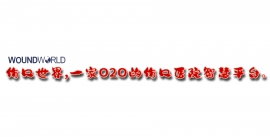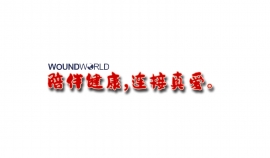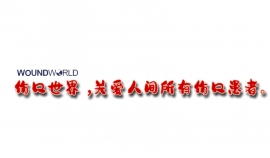文献精选
Delia Bogdanet1 · Michelle Toth Castillo2 · Helen Doheny3 · Louise Dervan1 · Miguel Angel Luque‑Fernandez4,5 ·Jose A. Halperin2 · Paula M. O’Shea1,3 · Fidelma P. Dunne1
Received: 12 July 2022 / Accepted: 27 September 2022 / Published online: 29 October 2022 © The Author(s) 2022
Abstract
Aim Even though most pregnancies are uneventful, occasionally complications do occur. Gestational diabetes is linked to an increased risk of adverse pregnancy outcomes. Early identification of women at risk of experiencing adverse outcomes, ideally through a single blood test, would facilitate early intervention. Plasma glycated CD59 (pGCD59) is an emerging biomarker which has shown promise in identifying hyperglycaemia during pregnancy and has been associated with the risk of delivering an LGA infant. The aim of this study was to explore the ability of the first- and second-trimester pGCD59 to predict adverse pregnancy outcomes.
Methods This was a prospective study of 378 pregnant women. Samples for pGCD59 were taken at the first antenatal visit and at the time of the 2 h 75 g OGTT (24–28 weeks of gestation). Adjusted receiver operating characteristic curves were used to evaluate the ability of pGCD59 to predict maternal and neonatal outcomes.
Results First-trimester pGCD59 levels were higher in women with gestational diabetes who delivered a macrosomic infant (4.2±0.7 vs. 3.5±1.0 SPU, p<0.01) or an LGA infant (4.3±0.3 vs. 3.6±1.0 SPU, p=0.01) compared to women with GDM that did not experience these outcomes. Second-trimester pGCD59 levels were higher in women that developed polyhydramnios (2.9±0.4 vs. 2.5±1.1 SPU, p=0.03). First- and second-trimester pGCD59 predicted pregnancy-induced hypertension with good accuracy (AUC:0.85, 95%CI:0.78–0.91; AUC: 0.80, 95%CI: 0.73–0.88, respectively) and neonatal hypoglycaemia with fair to good accuracy (AUC:0.77, 95%CI: 0.54–0.99, AUC:0.81, 95%CI:0.62–0.99).
Conclusions This study has shown that pGCD59 has the potential to predict adverse pregnancy outcomes. Prospective studies with a larger number of cases are necessary to fully explore and validate the potential of this emerging biomarker in predicting adverse pregnancy outcomes.
Keywords Pregnancy outcomes · Gestational diabetes · Biomarker · pGCD59
This article belongs to the topical collection Pregnancy and Diabetes, managed by Antonio Secchi and Marina Scavini.
* Delia Bogdanet
该Email地址已收到反垃圾邮件插件保护。要显示它您需要在浏览器中启用JavaScript。
Michelle Toth Castillo
该Email地址已收到反垃圾邮件插件保护。要显示它您需要在浏览器中启用JavaScript。
Helen Doheny
该Email地址已收到反垃圾邮件插件保护。要显示它您需要在浏览器中启用JavaScript。
Louise Dervan
该Email地址已收到反垃圾邮件插件保护。要显示它您需要在浏览器中启用JavaScript。
Miguel Angel Luque-Fernandez
该Email地址已收到反垃圾邮件插件保护。要显示它您需要在浏览器中启用JavaScript。
Jose A. Halperin
该Email地址已收到反垃圾邮件插件保护。要显示它您需要在浏览器中启用JavaScript。
Paula M. O’Shea
该Email地址已收到反垃圾邮件插件保护。要显示它您需要在浏览器中启用JavaScript。
Fidelma P. Dunne
该Email地址已收到反垃圾邮件插件保护。要显示它您需要在浏览器中启用JavaScript。
1 College of Medicine, Nursing and Health Sciences, School of Medicine, National University of Ireland, Galway, Ireland
2 Divisions of Haematology, Brigham & Women’s Hospital, Harvard Medical School, Boston, USA
3 Department of Clinical Biochemistry, Saolta University Health Care Group (SUHCG), Galway University Hospitals, Galway, Ireland
4 Department of Epidemiology, Harvard T.H. Chan School of Public Health, Boston, MA, USA
5 Department of Epidemiology and Population Health, London School of Hygiene and Tropical Medicine, London, UK
Alberto de Leiva‑Hidalgo1,2 · Alejandra de Leiva‑Pérez2
Received: 2 October 2022 / Accepted: 30 November 2022 / Published online: 31 December 2022 © The Author(s) 2022
Abstract
Aims The general objective has been the historiographical investigation of the organotherapy of diabetes mellitus between 1906 and 1923 in its scientific, social and political dimensions, with special emphasis on the most relevant contributions of researchers and institutions and on the controversies generated on the priority of the "discovery" of antidiabetic hormone.
Methods We have analyzed the experimental procedures and determination of biological parameters used by researchers during the investigated period (1906–1923): pancreatic ablation techniques, induction of acinar atrophy with preservation of pancreatic islets, preparation of pancreatic extracts (PE) with antidiabetic activity, clinical chemistry procedures (glycemia, glycosuria, ketonemia, ketonuria, etc.). The field investigation has included on-site and online visits to cities, towns, buildings, laboratories, universities, museums and research centers where the reported events took place, obtaining documents, photographic images, audiovisual recordings, as well as personal interviews complementary to the documentation consulted (primary sources, critical bibliography, reference works). The documentary archival sources have been classified according to theme, including those consulted in situ with those extracted online and digitized copies received mainly by email. Among the many archives contacted, those listed below have been most useful and have been consulted on site and on repeated visits: National Library of Medicine-Historical Archives (Bethesda, MD, USA); Archives, University of Toronto and Thomas Fisher Rare Books Library (Toronto, Ontario, Canada); Francis A. County Library of Medicine, Harvard University (Boston, Mass, USA); Zentralbibliothek der Humboldt-Universität (Berlin, DE), Geheimarchiv des Preuβischen Staates (Berlin, DE); Landesamt für Bürger—und Ordnungsangelegenheiten (LABO) (Berlin, DE); Arhivele Academiei Române şi Universitǎții Carol Davila (Bucharest, RO).
Main results and conclusions A) The European researchers Zülzer (Z Exp Path Ther 23:307–318, 1908) and Paulescu (CR Seances Soc Biol Fil 85:558, 1921) meet the requirements of the priority rule in the discovery of the antidiabetic hormone. B) Factors of socioeconomic and political nature related with the First World War and the inter-war period delayed the process of purification of the antidiabetic hormone in Europe. C) The Canadian scientist J. Collip, University of Alberta, temporarily assimilated to the University of Toronto, and the American chemist and researcher G. Walden, with the expert collaboration of Eli Lilly & Co., were the main authors of the purification process of the antidiabetic hormone. D) The scientific evidence, reflected in the heuristics of this research, allows to assert that the basic investigation carried out by the Department of Physiology of the University of Toronto, directed by the Scottish J. Macleod, in conjunction with the clinical research undertaken by the Department of Medicine of the University of Toronto (W. Campbell, A. Fletcher, D. Graham) made it possible in record time the successful treatment of patients with what was until then a deadly disease.
Keywords Pancreatic extracts · Organotherapy · Acomatol · Pancreina · Insulin · Patents
Managed by Antonio Secchi.
Alberto de Leiva-Hidalgo and Alejandra de Leiva-Pérez have
contributed equally.
Extended author information available on the last page of the article
Novella Rapini1 · Patrizia I. Patera1 · Riccardo Schiafni1 · Paolo Ciampalini1 · Valentina Pampanini1 ·
Matteoli M. Cristina1 · Annalisa Deodati1 · Giorgia Bracaglia2 · Ottavia Porzio2,3 · Rosario Ruta4 · Antonio Novelli4 ·
Mafalda Mucciolo4 · Stefano Cianfarani1,5,6 · Fabrizio Barbetti2
Received: 30 May 2022 / Accepted: 6 September 2022 / Published online: 30 September 2022 © The Author(s) 2022, corrected publication 2022
Abstract
Aim In the pediatric diabetes clinic, patients with type 1 diabetes mellitus (T1D) account for more than 90% of cases, while monogenic forms represent about 6%. Many monogenic diabetes subtypes may respond to therapies other than insulin and have chronic diabetes complication prognosis that is different from T1D. With the aim of providing a better diagnostic pipeline and a tailored care for patients with monogenic diabetes, we set up a monogenic diabetes clinic (MDC).
Methods In the first 3 years of activity 97 patients with non-autoimmune forms of hyperglycemia were referred to MDC. Genetic testing was requested for 80 patients and 68 genetic reports were available for review.
Results In 58 subjects hyperglycemia was discovered beyond 1 year of age (Group 1) and in 10 before 1 year of age (Group 2). Genetic variants considered causative of hyperglycemia were identified in 25 and 6 patients of Group 1 and 2, respectively, with a pick up rate of 43.1% (25/58) for Group 1 and 60% (6/10) for Group 2 (global pick-up rate: 45.5%; 31/68). When we considered probands of Group 1 with a parental history of hyperglycemia, 58.3% (21/36) had a positive genetic test for GCK or HNF1A genes, while pick-up rate was 18.1% (4/22) in patients with mute family history for diabetes. Specific treatments for each condition were administered in most cases.
Conclusion We conclude that MDC may contribute to provide a better diabetes care in the pediatric setting.
Keywords Monogenic diabetes · GCK · HNF1A · INSR · Glibenclamide · SGLT2i
Managed by Antonio Secchi.
* Fabrizio Barbetti
该Email地址已收到反垃圾邮件插件保护。要显示它您需要在浏览器中启用JavaScript。; 该Email地址已收到反垃圾邮件插件保护。要显示它您需要在浏览器中启用JavaScript。
1 Diabetology and Growth Disorders Unit, Bambino Gesù Children’s Hospital, IRCCS, 00164 Rome, Italy
2 Clinical Laboratory Unit, Bambino Gesù Children’s Hospital, Piazza S Onofrio 4, 00165 Rome, Italy
3 Department of Experimental Medicine, Univerisity of Rome ‘Tor Vergata’, 00131 Rome, Italy
4 Translational Cytogenomics Research Unit, Bambino Gesù Children’s Hospital, IRCCS, 00146 Rome, Italy
5 Department of Systems Medicine, University of Rome ‘Tor Vergata’, 00131 Rome, Italy
6 Department of Women’s and Children’s Health, Karolinska Institutet, 17177 Stockholm, Sweden
Angelo Emilio Claro1,2 · Clelia Palanza3 · Marianna Mazza1,2 · Andrea Corsello4 · Alessandro Rizzi4 · Linda Tartaglione4 · Chiara de Waure5 · Giuseppe Marano1,2 · Simone Piciollo6 · Giovanna Elsa Ute Muti Schuenemann7 · Marta Rigoni8 · Paola Muti8 · Alfredo Pontecorvi9 · Luigi Janiri1,2 · Gabriele Sani1,2 · Dario Pitocco4
Received: 29 July 2022 / Accepted: 7 October 2022 / Published online: 7 November 2022 © The Author(s) 2022
Abstract
Aims Common Psychiatric Disorders (CPDs) are associated with the development of overweight and obesity, the strongest risk factors for the onset and maintenance of Type 2 Diabetes mellitus (T2D). To the best of our knowledge, this is the frst study to assess the prevalence of CPDs in patients with T2D in Italy.
Methods This is a monocentric cross-sectional study; n=184 T2D patients were screened for CPDs using the Patient Health Questionnaire (PHQ). Primary outcome was to evaluate the prevalence of CPDs. To assess association between CPDs and risk factors, we have utilized univariable logistic regression models.
Results 64.1% were men, median age was 67 (59–64) and median BMI 27 (25–30) kg/m2 . The 42.9% tested positive for one or more mental disorders, 25.6% for depression. Patients with higher BMI (p=0.04) had an increased likelihood of testing positive to the PHQ. Patients who had implemented lifestyle changes (p<0.01) and were aware that mental health is linked to body health (p=0.07) had a reduction in the likelihood of testing positive.
Conclusions Prevalence of CPDs in T2D patients is higher than in the general population. Since CPDs favor the onset and subsistence of T2D, integrated diabetic-psychiatric therapy is required for improvement or remission of T2D in patients with comorbid CPDs.
Keywords Diabetes Mellitus Type 2 · Italy · Mental Disorders · Depression · Feeding and Eating Disorders · Alcohol Induced Disorders
Managed by Massimo Porta.
* Dario Pitocco
该Email地址已收到反垃圾邮件插件保护。要显示它您需要在浏览器中启用JavaScript。



